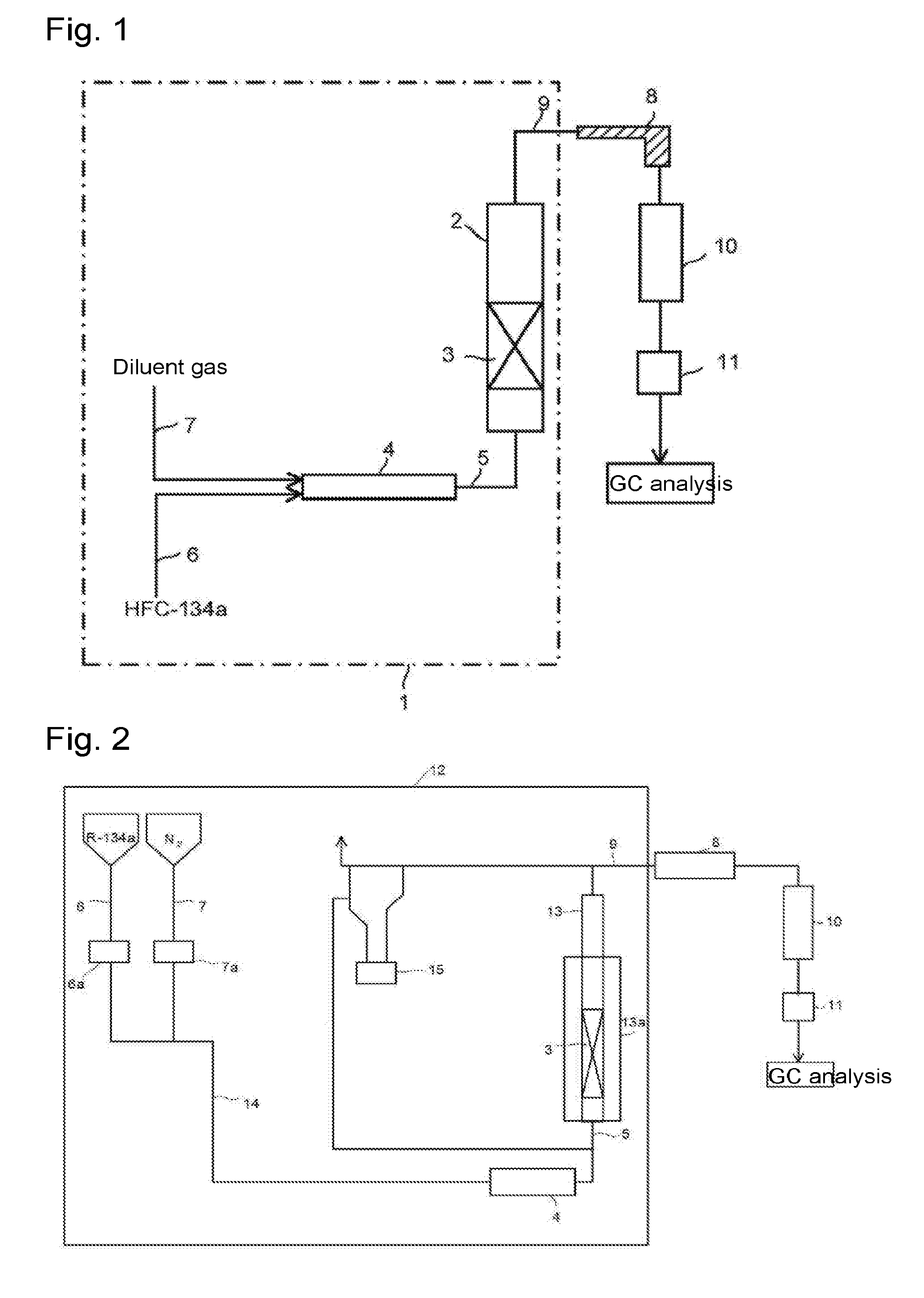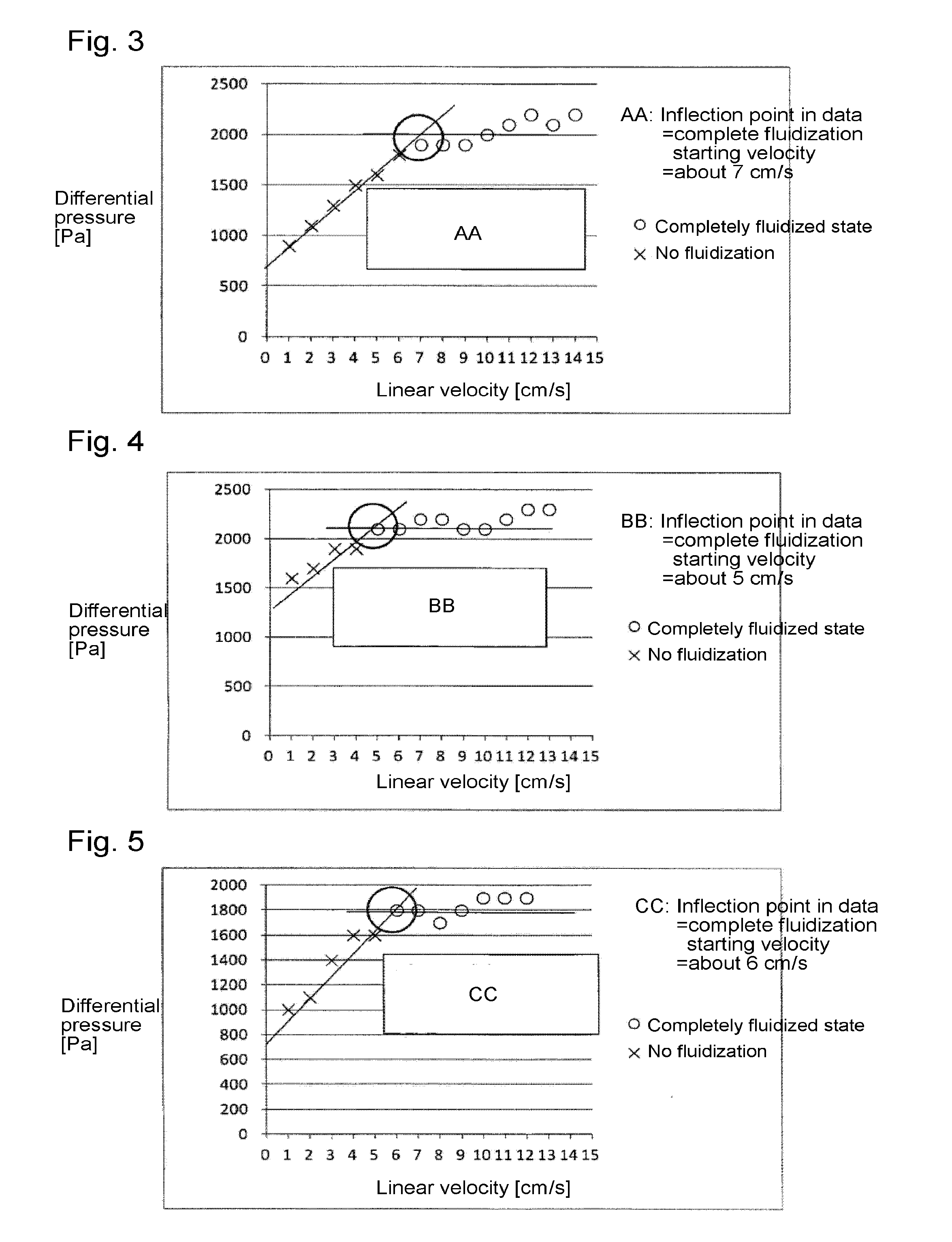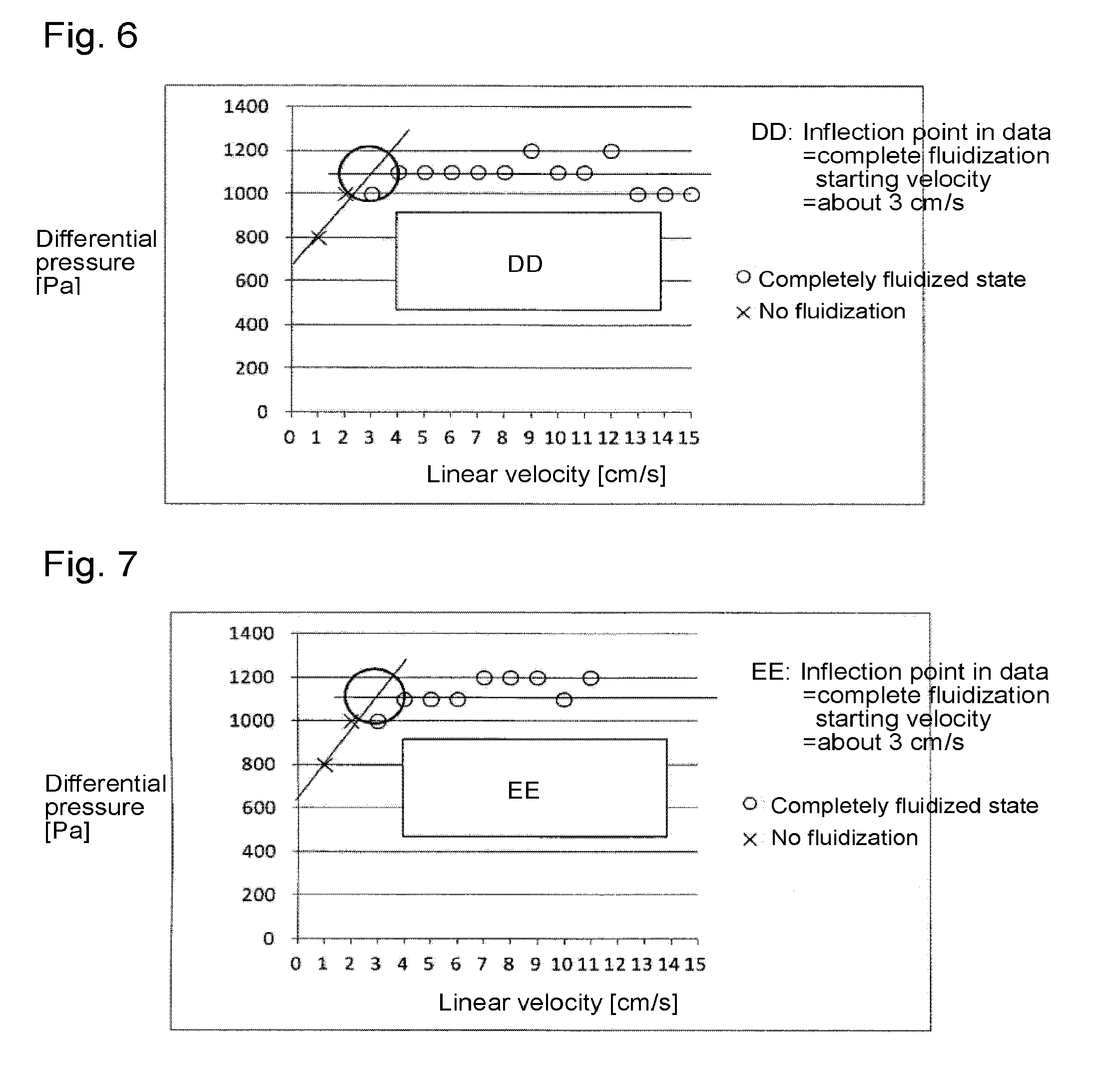Method for producing trifluoroethylene
a trifluoroethylene and ethylene glycol technology, applied in the field of trifluoroethylene production, can solve the problems of low degree of hfc-134a conversion, large amount of water formed, and heavy load of moisture removal process, and achieve high degree of 134a conversion and selectivity, and efficient production
- Summary
- Abstract
- Description
- Claims
- Application Information
AI Technical Summary
Benefits of technology
Problems solved by technology
Method used
Image
Examples
examples 2 to 5
[0072]Examples 2 to 5 were sequentially carried out without exchanging calcium oxide in the fixed bed reactor, after completion of the reaction in Example 1 until completion of Example 5. In Examples 2 to 5, HFC-134a was reacted with calcium oxide in the same manner as in Example 1 except that the reaction conditions were changed as identified in Table 1. The composition of the outlet gas collected was analyzed by gas chromatography. The analysis results are shown in Table 1.
example 1
Fluidization Example 1
[0095]Through the fluidized bed reaction apparatus packed with the solid reactant (calcium oxide having an average particle size of 100 μm) to a height of 200 mm shown in Reactant Packing Example 3, a nitrogen gas was made to flow at a flow rate of 3.05 mol / min (linear velocity of 14 cm / s) at room temperature (25° C.) under normal pressure. On that occasion, the differential pressure between on the inlet side and on the outlet side of the fluidized bed reactor measured by the differential pressure gauge was 10,900 Pa.
[0096]Then, the nitrogen gas flow rate was gradually decreased, and the differential pressure between on the inlet side and on the outlet side of the fluidized bed reactor was measured by the differential pressure gauge at each flow rate. The flow rate of the nitrogen gas, the linear velocity, the measured differential pressure after packing, and the calculated differential pressure obtained by calculating the difference with the Blank Differential...
example 2
Fluidization Example 2
[0097]Through the fluidized bed reaction apparatus packed with the solid reactant (calcium oxide having an average particle size of 100 μm) to a height of 300 mm shown in Reactant Packing Example 4, a nitrogen gas was made to flow at a flow rate of 2.83 mol / min (linear velocity of 13 cm / s) at room temperature (25° C.) under normal pressure. On that occasion, the differential pressure between on the inlet side and on the outlet side of the fluidized bed reactor measured by the differential pressure gauge was 10,200 Pa.
[0098]Then, the nitrogen gas flow rate was gradually decreased, and the differential pressure between on the inlet side and on the outlet side of the fluidized bed reactor was measured by the differential pressure gauge at each flow rate. The flow rate of the nitrogen gas, the linear velocity, the measured differential pressure after packing, and the calculated differential pressure obtained by calculating the difference with the Blank Differential...
PUM
| Property | Measurement | Unit |
|---|---|---|
| temperature | aaaaa | aaaaa |
| temperature | aaaaa | aaaaa |
| pressure | aaaaa | aaaaa |
Abstract
Description
Claims
Application Information
 Login to View More
Login to View More - R&D
- Intellectual Property
- Life Sciences
- Materials
- Tech Scout
- Unparalleled Data Quality
- Higher Quality Content
- 60% Fewer Hallucinations
Browse by: Latest US Patents, China's latest patents, Technical Efficacy Thesaurus, Application Domain, Technology Topic, Popular Technical Reports.
© 2025 PatSnap. All rights reserved.Legal|Privacy policy|Modern Slavery Act Transparency Statement|Sitemap|About US| Contact US: help@patsnap.com



